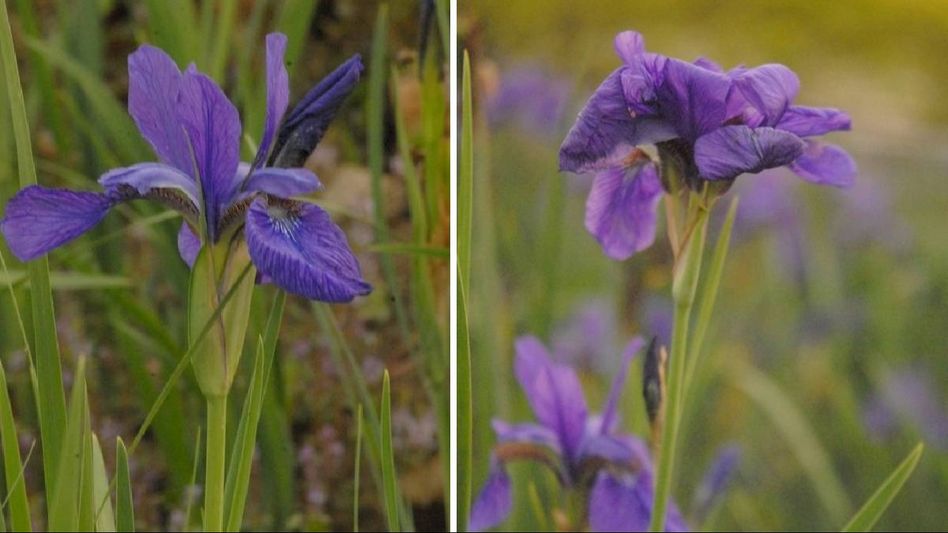Manipuri Kombirei Iris: A new addition to Indian flora
The Manipuri Kombirei, an iris endemic to Manipur, has been officially recognised as a new addition to India's flora. This marks the first reporting of Iris laevigata Fisch. from Manipur.
 Manipuri Kombirei Iris: A new addition to Indian flora
Manipuri Kombirei Iris: A new addition to Indian floraManipuri Kombirei, an iris endemic to Manipur, has been officially recognized as a new addition to India's flora, according to a journal published in the Indian Journal of Traditional Knowledge. The study is done by scientist of CSIR-NEIST, Huidrom Birkumar, and Botanical Survey of India, Ashiho A Mao
Previously misidentified as Iris bakeri Wall., a thorough investigation has confirmed its botanical identity as Iris laevigata Fisch. This is the first report of I. laevigata Fisch. from Manipur, marking it as a new addition to Indian flora.
During 1960’s Kombirei plant was naturally growing in two wetlands of Manipur namely, Lamphelpat and Yaralpat but now it has completely vanished from its natural habitat due to various factors like habitat loss and invasion by weeds but a few hundred plants are maintained in the captive farm at the periphery of Lamphelpat by a private cultural society viz., Ipathoukok.
Currently, some plants are also recorded in small pockets from two wetlands of Manipur namely, Maibam Phumlou and Ikkop pat which is believed to have been established later by being brought down by the upstream rivers falling into the lakes. Manipuri Iris is religiously offered during the Manipuri New Year viz., Sajibu Cheiraoba as a symbol of eliminating the caste system.
Due to its habitat sensitivity, the conservation of this plant should be prioritized, otherwise, loss of this species from Manipur may lead to loss of a species from the Indian flora.
The Iris L. (Iridaceae), a small genus that comprises about 260-300 species1 worldwide; is widely distributed over much of the temperate and sub-arctic regions of the Northern Hemisphere. Twenty-one taxa of Iris are reported from the whole Himalayan region3 and 23 species from India.
Generally, Iris species may be terrestrial or aquatic in habitat while some are grown in high altitudes like Iris decora, Iris wattii, etc. One species of Iris locally called as ‘Kombirei’ or ‘Konbirei’ has been growing
in the wetlands or swampy localities in Manipur since ages. A research publication of Botanical Survey of India, published in 1961, suspects the Kombirei or Manipuri Iris to be Iris bakeri Wall. but under
investigation.
Since then, the scientific name of the Kombirei plant has been used as Iris bakeri Wall. But it is found that Iris bakeri Wall. is misnomer and nonexistent species. This species was also reported endemic to Manipur.
The species identity was overlooked during the last few decades; therefore, the present study was taken up when this species bloomed, for detailed morphological study based on living specimens.
The herbarium specimen is preserved at CSIR-NEIST, Branch Laboratory, Lamphelpat, Imphal, Manipur and one specimen has been deposited in the ‘ASSAM’ Herbarium of the Botanical Survey of India, Eastern Circle, Shillong.
The identity of this plant has been established as Iris laevigata Fisch. after thorough study of the plants, its flowers and other morphological structures. The identity of the plant was authenticated from the Royal Botanical Garden.
This Iris species ‘Kombirei’ is religiously associated with the Meitei or Meetei community as it is offered during the Manipuri New year called Sajibu Cheiraoba.
It needs mention here that Huidrom Birkumar Singh did the field study, collected plant samples, morphological study of the plant, plant identification and manuscript preparation while AAM helped in species authentication, herbarium preparation & deposition in BSI, EC, Shillong and manuscript correction.
Copyright©2025 Living Media India Limited. For reprint rights: Syndications Today









